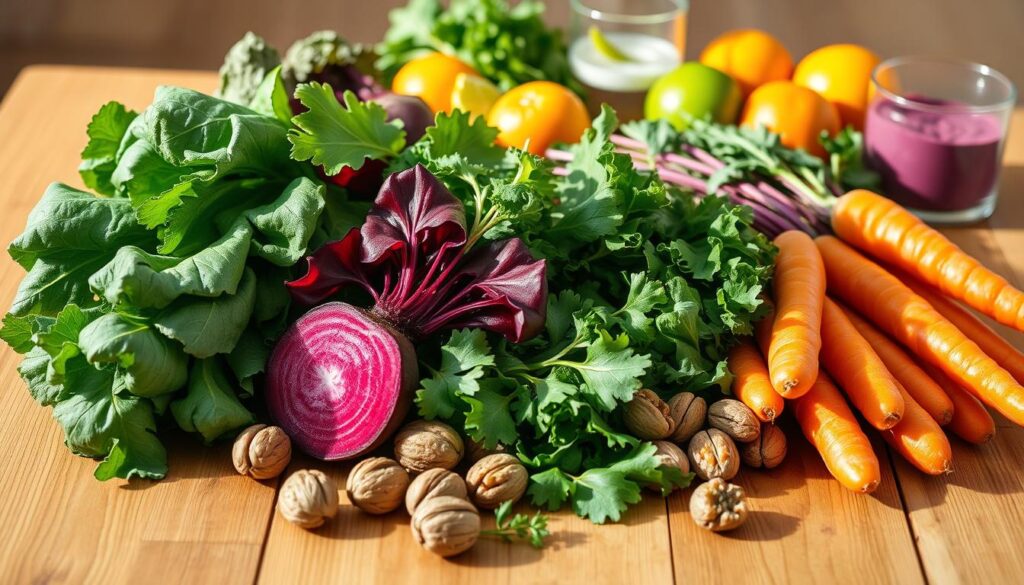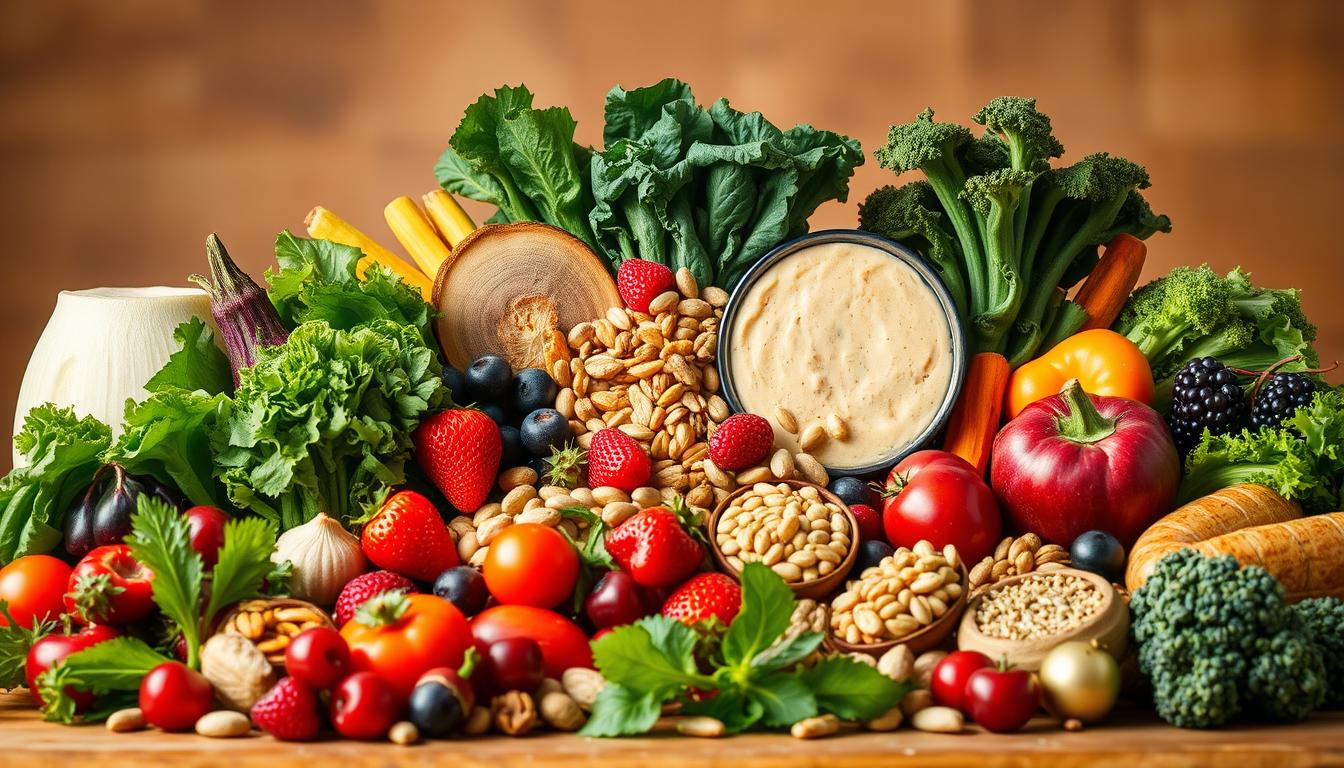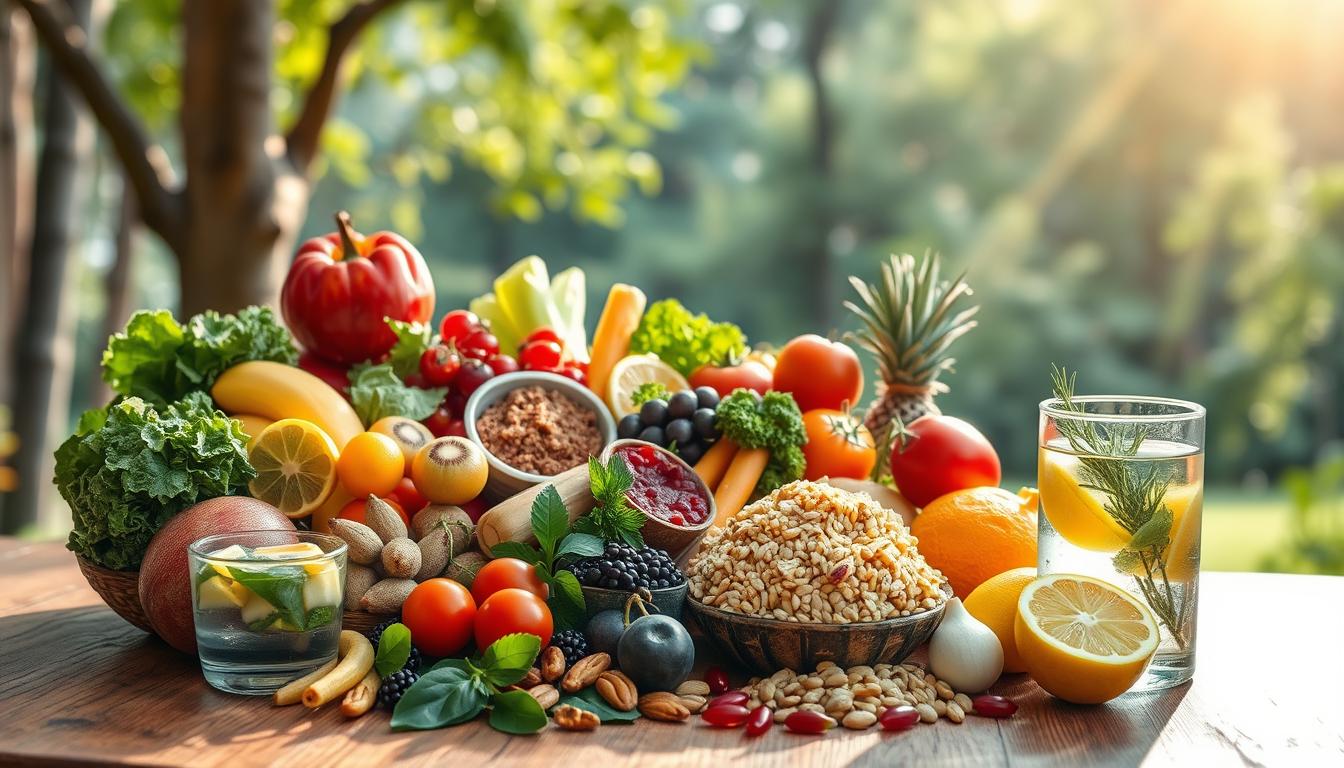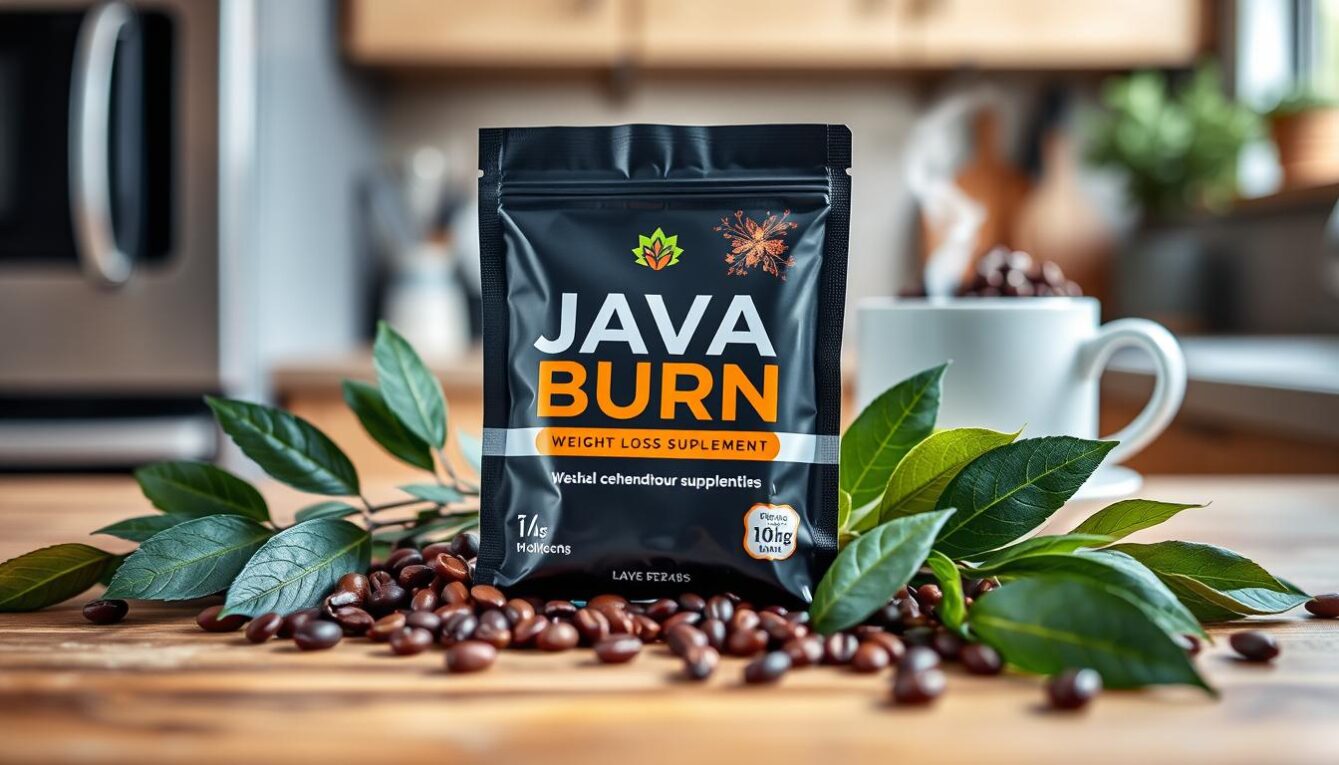Did you know that what you eat can directly impact your energy levels and overall health? It’s true! The secret lies in a molecule called nitric oxide, which plays a crucial role in keeping your body functioning at its best.
This molecule helps improve blood flow, supports healthy blood pressure, and even enhances athletic endurance. Research shows that consuming certain foods, like beet juice, can boost nitric oxide levels by 21% in just 45 minutes.
In this article, we’ll explore 10 accessible foods that naturally increase nitric oxide production. These choices not only support your health but also help you perform better in daily activities and workouts. Ready to discover how your diet can make a difference?
Key Takeaways
- Nitric oxide is essential for vascular health and exercise performance.
- Dietary choices directly influence nitric oxide production.
- Improved blood flow and lower blood pressure are key benefits.
- Beet juice can significantly boost nitric oxide levels quickly.
- Natural foods are an effective way to enhance overall health.
Introduction to Nitric Oxide and Its Benefits
Your body relies on tiny molecules to keep everything running smoothly. One of these, nitric oxide, is a signaling molecule essential for cellular communication. It helps your blood vessels relax, improving circulation and nutrient delivery to muscles and organs.
When nitric oxide levels are low, it can lead to issues like hypertension and fatigue. Research shows that this molecule also plays a role in reducing plaque buildup, preventing blood clots, and even easing arthritis pain.

Boosting nitric oxide can have significant health benefits. It supports better blood flow, lowers blood pressure, and enhances overall cardiovascular function. One way to increase its production is through diet.
Foods rich in dietary nitrates, like vegetables, and those containing amino acids like L-arginine, found in nuts and seeds, are excellent choices. These natural sources can help your body produce more nitric oxide, improving your health and energy levels.
Why Nitric Oxide is Crucial for Your Health
Maintaining optimal health often starts with understanding the molecules that keep your body functioning. One of these, nitric oxide, plays a vital role in supporting your heart, immune system, and even your bones. Without it, your body may struggle to perform at its best.
Healthy nitric oxide levels are essential for cardiovascular health. They help relax blood vessels, improving circulation and regulating blood pressure. This not only supports your heart but also ensures that oxygen and nutrients reach your cells efficiently.

Research shows that nitric oxide can reduce the risk of diabetes and protect your skin from UV damage. It also plays a role in preventing osteoporosis and cognitive decline. These benefits make it a key player in overall health.
However, aging naturally reduces your body’s ability to produce nitric oxide. Sedentary lifestyles and smoking can further deplete oxide levels, leading to fatigue and other health issues. To counteract this, focus on a diet rich in foods that boost nitric oxide production.
By prioritizing your health and making smart dietary choices, you can maintain healthy nitric oxide levels and enjoy the benefits of improved circulation, stronger bones, and a more resilient immune system.
Top 10 Simple Nitric Oxide Foods That Can Improve Your Performance
Boosting your energy and health starts with the right foods. Certain choices can naturally increase nitric oxide production, supporting better circulation and overall wellness. Here are ten foods that can make a difference.

1. Beets
Beets are rich in dietary nitrates, which your body converts into nitric oxide. This helps improve blood flow and supports cardiovascular health.
2. Garlic
Garlic contains compounds that stimulate nitric oxide production. It also offers antioxidants that protect your cells from damage.
3. Meat
Lean meats provide L-arginine, an amino acid that boosts nitric oxide levels. Opt for unprocessed options to avoid nitrosamines.
4. Dark Chocolate
Dark chocolate is packed with flavanols, which enhance nitric oxide availability. Pair it with red wine for a heart-healthy combination.
5. Leafy Greens
Spinach, kale, and other greens are high in nitrates. They’re also rich in vitamins and minerals that support overall health.
6. Citrus Fruits
Oranges, lemons, and grapefruits are loaded with vitamin C, which helps maintain healthy blood vessels and nitric oxide levels.
7. Pomegranate
Pomegranates are known for their antioxidant properties. They also improve blood flow by increasing nitric oxide production.
8. Nuts and Seeds
Almonds, walnuts, and flaxseeds are excellent sources of L-arginine. They’re also packed with healthy fats and fiber.
9. Watermelon
Watermelon contains citrulline, which your body converts into nitric oxide. It’s a refreshing way to support your health.
10. Red Wine
Red wine contains resveratrol, which enhances nitric oxide availability. Enjoy in moderation—one glass a day—for cardiovascular benefits.
| Food | Key Benefit |
|---|---|
| Beets | High in dietary nitrates |
| Garlic | Stimulates nitric oxide production |
| Meat | Provides L-arginine |
| Dark Chocolate | Rich in flavanols |
| Leafy Greens | High in nitrates and vitamins |
| Citrus Fruits | Loaded with vitamin C |
| Pomegranate | Boosts blood flow |
| Nuts and Seeds | Source of L-arginine |
| Watermelon | Contains citrulline |
| Red Wine | Contains resveratrol |
How to Incorporate Nitric Oxide-Rich Foods into Your Diet
Making small changes to your daily meals can have a big impact on your health. By adding foods that boost nitric oxide levels, you can support better circulation and overall wellness. Here are some easy ways to include these nutrient-packed options in your diet.
Start your day with a “NO-boosting” breakfast. Try a spinach omelet paired with fresh citrus juice. This combination provides nitrates and vitamin C, which help maintain healthy nitric oxide levels.
For snacks, whip up quick and healthy recipes like beet hummus or cocoa-almond energy bites. These treats are not only delicious but also packed with ingredients that support your intake of nitric oxide-boosting nutrients.
When preparing meals, avoid overcooking vegetables. High heat can destroy nitrates, reducing their benefits. Instead, enjoy raw greens like spinach or kale in salads or smoothies.
Here’s a table with simple ideas to incorporate these foods into your daily routine:
| Meal | Foods to Include |
|---|---|
| Breakfast | Spinach omelet, citrus juice |
| Snacks | Beet hummus, cocoa-almond bites |
| Lunch/Dinner | Raw greens, garlic-infused dishes |
| Pre-Workout | Beet juice, watermelon slices |
By making these small adjustments, you can enhance your diet and support your body’s natural ability to produce nitric oxide. Start today and feel the difference in your energy and health!
Factors That Can Deplete Nitric Oxide Levels
Certain lifestyle choices can directly impact your body’s natural processes. One of these is the production of nitric oxide, a molecule essential for vascular health and overall wellness. Understanding what depletes it is key to maintaining optimal health.
Aging is a major factor. As you grow older, your body’s ability to produce nitric oxide naturally declines. This is due to reduced function of the endothelium, the inner lining of blood vessels. Lower nitric oxide levels can lead to issues like high blood pressure and reduced circulation.
A sedentary lifestyle also plays a role. Lack of physical activity can impair blood flow and reduce endothelial function. Regular exercise, on the other hand, helps stimulate nitric oxide production and supports cardiovascular health.
Smoking is another significant contributor. It damages blood vessels and reduces nitric oxide availability. Over time, this can lead to serious vascular issues and increased health risks.
Lastly, a poor diet can deplete nitric oxide levels. Processed meats like bacon and hot dogs contain nitrosamines, which are harmful compounds. Instead, focus on antioxidant-rich vegetables and whole foods to support healthy nitric oxide production.
- Aging reduces endothelial function, lowering nitric oxide levels.
- A sedentary lifestyle impairs blood flow and nitric oxide production.
- Smoking damages blood vessels and depletes nitric oxide.
- Processed meats and poor dietary choices hinder nitric oxide availability.
By addressing these factors, you can take proactive steps to maintain healthy nitric oxide levels and support your overall well-being.
The Science Behind Nitric Oxide Production
Understanding how your body produces nitric oxide can unlock better health and performance. This process relies on two main pathways: the nitrate-nitrite pathway and the L-arginine pathway. Both play a crucial role in maintaining healthy circulation and energy levels.
The nitrate-nitrite pathway starts with dietary nitrates found in foods like beets and leafy greens. Oral bacteria convert these nitrates into nitrites. Once in the stomach, nitrites are transformed into nitric oxide, which your body uses to relax blood vessels and improve blood flow.
Another way your body produces nitric oxide is through L-arginine, an amino acid found in nuts, seeds, and lean meats. While supplements are available, research shows that dietary sources of L-arginine are more effective. This is because whole foods provide additional nutrients that support overall health.
Did you know that even your breathing can influence nitric oxide levels? Breathing through your nose during exercise increases nitric oxide production. This simple habit can enhance oxygen delivery to your muscles, improving endurance and performance.
- The nitrate-nitrite pathway converts dietary nitrates into nitric oxide.
- Dietary L-arginine is more effective than supplements for nitric oxide production.
- Nose breathing during exercise stimulates nitric oxide release.
By understanding these processes, you can make informed choices to support your body’s natural ability to produce nitric oxide. Whether through diet or lifestyle changes, small adjustments can lead to significant health benefits.
Health Benefits of Boosting Nitric Oxide
Boosting nitric oxide levels can unlock a range of health benefits, from better circulation to sharper brain function. This molecule plays a vital role in supporting your body’s overall wellness, making it a key focus for anyone looking to enhance their health.
One of the most notable benefits is improved exercise performance. Studies show that higher nitric oxide levels reduce post-workout soreness and speed up recovery. This means you can train harder and recover faster, achieving your fitness goals more efficiently.
Nitric oxide also supports cognitive health. Research on aronia berries found that they improve mood and brain function by increasing nitric oxide production.
“Participants reported better focus and reduced mental fatigue after regular consumption.”
highlighting the cognitive benefits of this molecule.
Cardiovascular health is another area where nitric oxide shines. Maintaining healthy levels can lower the risk of heart disease by up to 15%. This is due to its ability to relax blood vessels, improve circulation, and regulate blood pressure.
Additionally, nitric oxide supports your immune system by enhancing blood flow and nutrient delivery to cells. This helps your body fight off infections and stay resilient against illnesses.
- Improved exercise performance and faster recovery.
- Enhanced mood and sharper brain function.
- 15% lower risk of heart disease.
- Stronger immune system and better overall health.
By focusing on nitric oxide-boosting foods and habits, you can enjoy these health benefits and take proactive steps toward a healthier, more vibrant life.
Conclusion: Boost Your Performance with Nitric Oxide Foods
Enhancing your daily energy and vitality can start with the right dietary choices. Incorporating foods like beets, leafy greens, nuts, and citrus into your meals can naturally boost nitric oxide levels. These options support better circulation and overall health.
Making gradual changes to your diet ensures sustainable results. Start by adding one or two of these foods to your daily routine. Over time, you’ll notice improved energy and better physical performance.
For a personalized approach, consider consulting a dietitian. They can help tailor a plan that fits your lifestyle and goals. Small, consistent swaps can make a big difference in your well-being.













